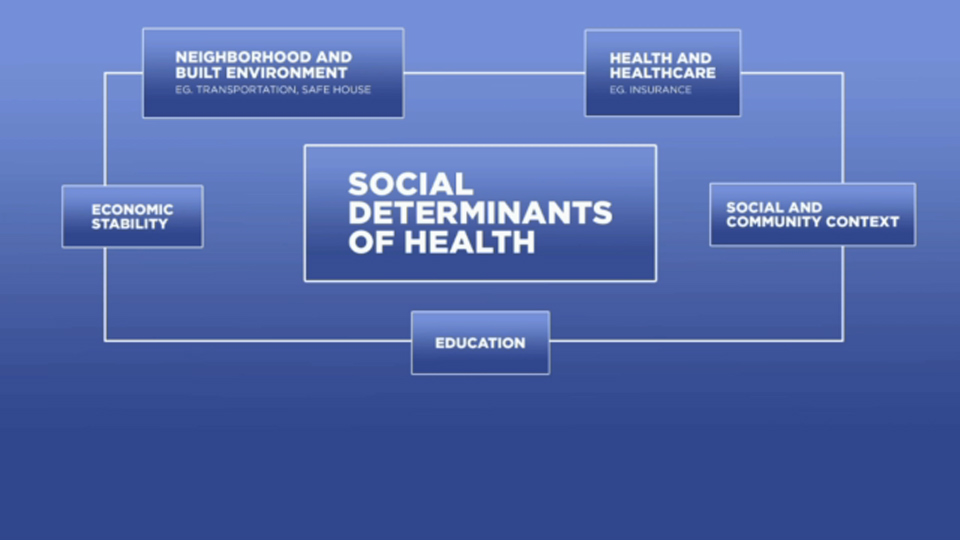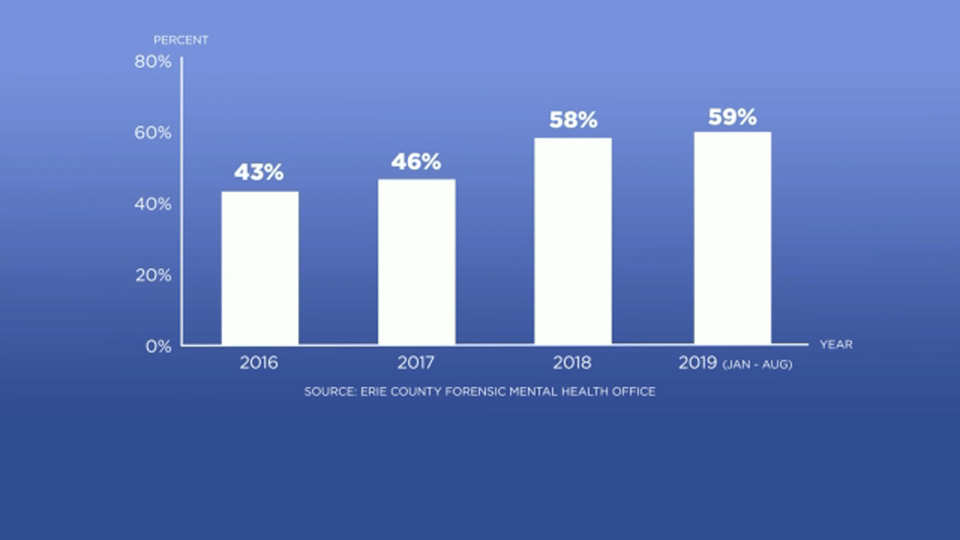Most people with mental health conditions benefit from the shift to outpatient care and away from living in institutional settings for long periods.
It’s less expensive and disruptive to normal life obligations like going to work or taking care of children, but getting access to those outpatient services can be challenging.
One day in the Erie County Medical Center Behavioral Health Center costs $1,419 for a room, board, daily nurse care and related occupancy costs. Diagnostic tests, drugs, and other professional services will accrue additional charges.
The total cost of a stay there will depend on a person’s insurance, the length of their stay and the treatment they receive.
But, the average cost of therapy outside of a hospital averages $60 to $120.
"The problem often is getting outpatient care," said Dr. Brian Joseph, a medical Director at BryLin Hospital. “If you could call up and see a psychiatrist within 48 hours, you might not need to go to the emergency room; you might not need to be admitted.”
A decrease in the number of in mental health professionals makes getting an appointment hard.
"Recruiting professionals is just a problem... you need psychiatrists, you need nurse practitioners, you need social work people to provide counseling, you need psychologists to provide counseling, both in the private and the public sector,” Joseph said. “If you call up today, you're going to find you can't get in for two to three months."
The stigma that surrounds people with mental health adds a barrier for people who want to interact with community services.
"Some of the access [behavioral health care] is limited by stigma,” said Dr. Michael Cummings, an associate medical director for behavioral health services at ECMC. “But some of it is just a reality of it's not necessarily easy to get an appointment or access to appointment."
The bulk of services in Western New York’s eight counties are in Erie County, leaving many others to travel to get care or opt-out of care until it becomes an emergency and often end up at ECMC’s emergency psychiatric center or in jail.
"We often end up being the solution to a lot of problems that are not the same [as] mental health concerns initially, but concerns about social determinants of health,” Cummings said of emergency psychiatric center.
Social determinants of health are the economic and social conditions — like access to healthy food, safe housing, insurance, and reliable transportation — that impact people’s health. The lack of these things limits a person's ability to get to and afford outpatient care.

"There can be social-economic challenges,” Cummings said. “If you have to take a couple of buses or you have childcare issues. All these things have to factor and many agencies have after hours and late appointments to reflect that there's individuals working that they can't get to a daytime appointment."
Poverty increases mental health risks while mental health conditions can cause further poverty, according to the 2018 Poverty in Buffalo, Causes, Impacts and Solutions report by the Truth Commission on Poverty in Western New York.
There are higher levels of severe mental illness and trauma in the Erie County Holding Center from zip codes 14201, 14211, 14215, 14207 and 14150, according to data provided by the Department of Forensic Mental Health’s Texas Christian University Drug Screening from January through June 2019.
All but one of those zip codes’ estimated population living in poverty is at least double the national poverty rate, which is 12.3 percent based on current census data. The highest percentage of those living in poverty reside in 14211, with an estimated poverty rate of 38.5 percent.
Compounding all of the previous problems to accessing mental health services, facilitating communication across different organizations at the county, services provider and nonprofit level are all needed.
"We've essentially identified what the components are, and we have those — many have those components already in place. What it really comes down to now is filling in those gaps,” Cummings said. “At the same time, making each system responsible to the other... and be able to communicate, there's challenges to that."
All of these barriers are leading to an increase in mental health and substance use treatment happening at the Erie County Holding Center.
The percent of the population at the holding center with identified mental health conditions increased over time to 59.2 percent from January to August of this year, according to the Erie County Department of Forensic Mental Health.

Navigating the mental health care and the criminal justice systems are challenging for those who work within them — it’s even more difficult for everyday Western New Yorkers to do so.
"A patient, an individual, their family, should not be expected to know how to navigate the system. The system has a responsibility to help them navigate it,” Cummings said.
Possible Solutions:
Advocate for improvements to social determinants of health in zip codes that show higher incidences of trauma and severe mental illness in the Holding Center by improving access to health care insurance, food and safe house.
The 2014 Social Determinants of Mental Health report by the World Health Organization highlights a multitude of case studies to improve social determinants of mental health including the High/Scope Perry Preschool Project, which showed the benefits of giving quality early childhood education to society.
Combating the stigma surrounding mental health can also help. Visit letstalkstigma.org to learn more.
After looking at the barriers outside of the Erie County Holding Center to receiving mental health care — whether that’s beds, access to services or stigma — tomorrow’s story will look at the challenges within the Holding Center. You can watch that only on Spectrum at 6 and 11 p.m.









